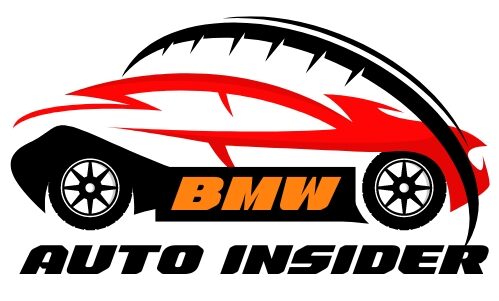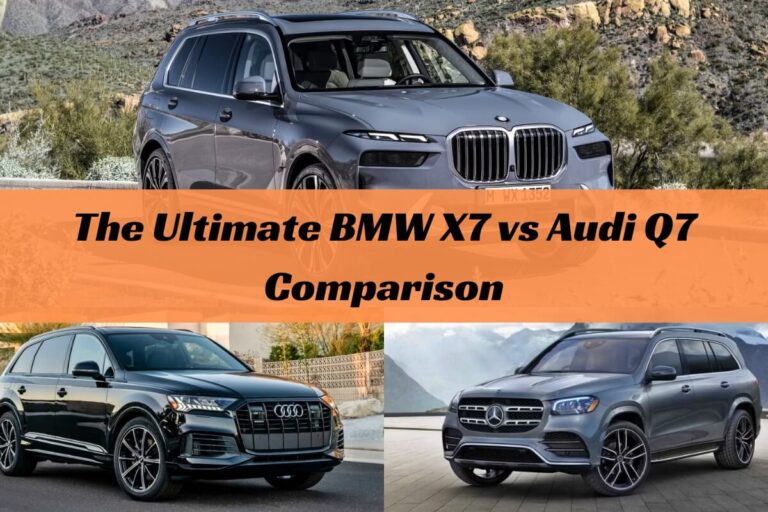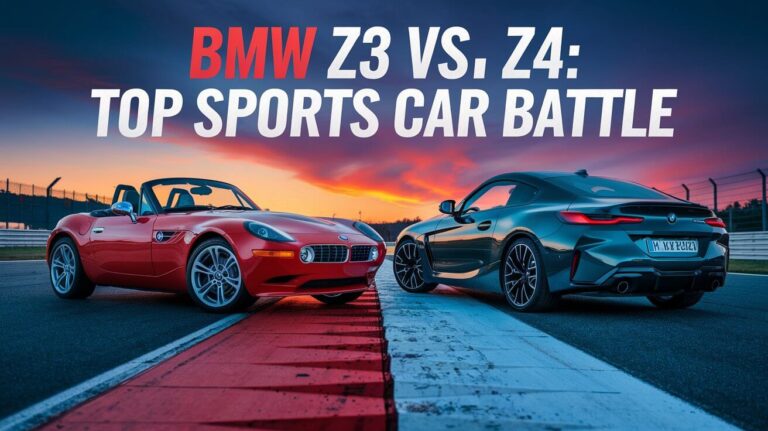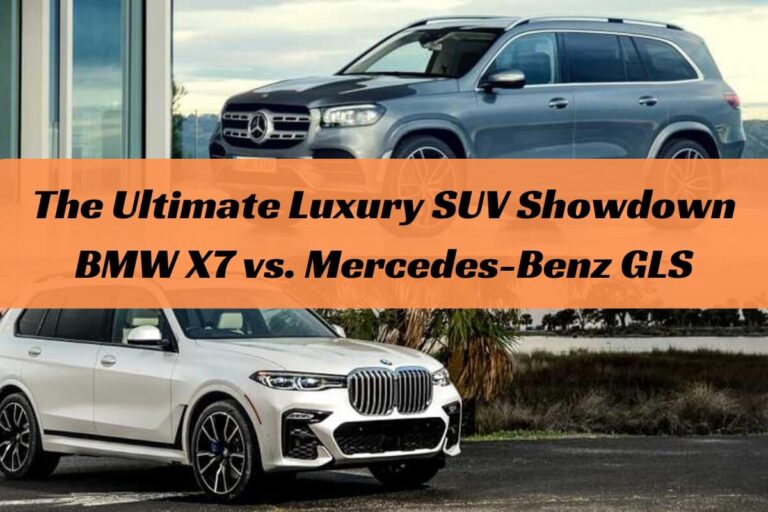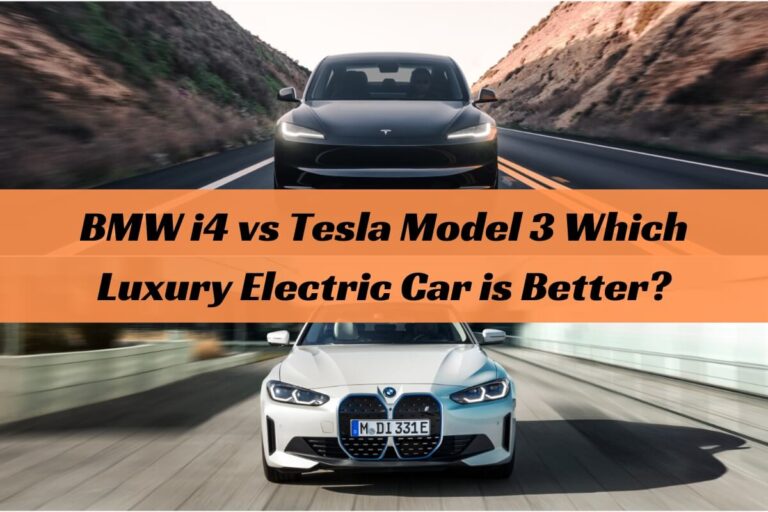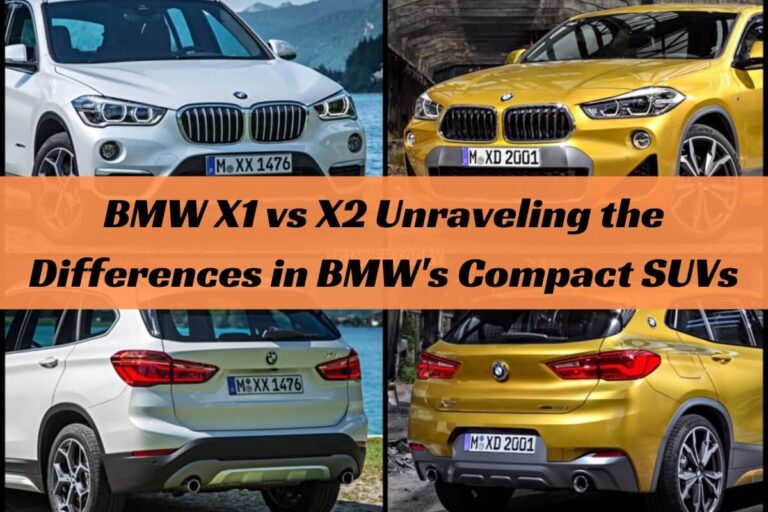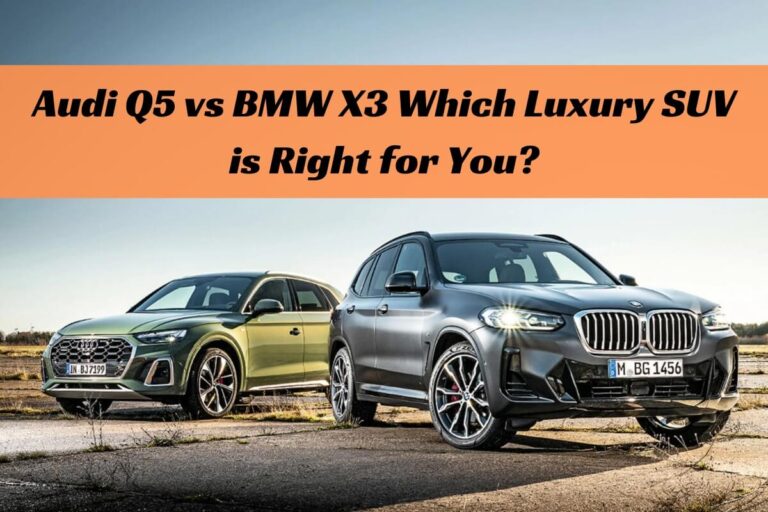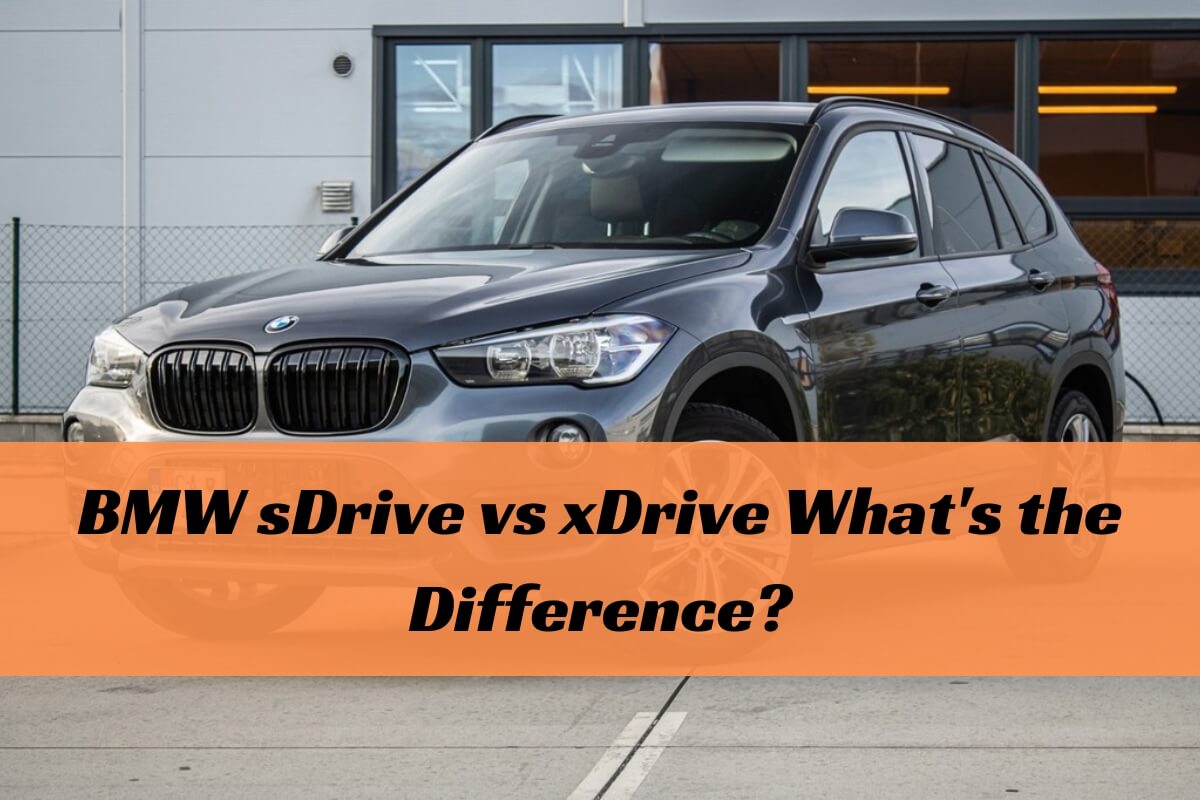
Choosing the right drivetrain is one of the most crucial decisions when buying a new vehicle. For BMW enthusiasts, this often means weighing the pros and cons of the German automaker’s sDrive and xDrive systems. But what exactly is the difference between BMW sDrive and xDrive?
In simple terms, BMW sDrive refers to a two-wheel drive system (either front or rear-wheel drive), while xDrive is BMW’s intelligent all-wheel drive technology. This blog post will explore the key distinctions between these drivetrains, their advantages and disadvantages, performance comparisons, and which BMW models offer each option to help you make an informed purchasing decision.
What is BMW sDrive?
BMW’s sDrive system sends power from the engine to just two of the vehicle’s wheels, as opposed to all four wheels in an all-wheel drive setup. The vast majority of BMW’s sDrive models are rear-wheel drive (RWD), staying true to the brand’s roots of building sporty, performance-oriented vehicles with a classic RWD layout.
However, there are a few exceptions where sDrive means the vehicle is front-wheel drive (FWD). One such example is the BMW X2, a subcompact luxury crossover SUV that comes standard with an sDrive FWD configuration.
Advantages of BMW sDrive
One of the primary advantages of choosing a BMW sDrive model is improved fuel efficiency. Since the drivetrain only has to power two wheels instead of four, these vehicles tend to be lighter and more economical at the pump.
Furthermore, many driving enthusiasts prefer the engaging and sporty driving dynamics that come with a classic RWD layout. Rear-wheel drive vehicles often feel more responsive, with a consistent flow of power from the engine to the rear wheels during acceleration.
Finally, BMW sDrive models are generally more affordable compared to their xDrive counterparts, as they have fewer complex components and a simpler drivetrain design.
Disadvantages of BMW sDrive
While sDrive offers benefits in terms of efficiency and driving engagement, it does come with some drawbacks. Two-wheel drive vehicles, whether FWD or RWD, inherently have less traction compared to all-wheel drive alternatives, especially in slippery conditions like rain, snow, or loose surfaces.
Additionally, BMW sDrive models may have lower towing capacities due to the limited traction provided by just two driving wheels. Acceleration can also suffer, as the vehicle has to rely on a single axle to put power down during hard launches.
What is BMW xDrive?
BMW’s xDrive is an intelligent all-wheel drive system that continuously monitors traction levels and driving conditions, automatically distributing power between the front and rear axles as needed. This advanced technology works in conjunction with the vehicle’s Dynamic Stability Control to provide superior grip, handling, and control, even in adverse weather or on low-traction surfaces.
Unlike some traditional all-wheel drive setups that simply split power evenly between the front and rear axles, BMW’s xDrive system can send anywhere from 100% of the available power to the rear wheels, or up to 100% to the front wheels, depending on which wheels have the most grip at any given moment.
Advantages of BMW xDrive
The primary advantage of BMW’s xDrive system is its ability to dramatically improve traction, stability, and control in a wide range of driving conditions. Whether you’re navigating slick roads, loose gravel, or deep snow, xDrive can provide the necessary grip to keep you moving forward safely.
Additionally, xDrive models often benefit from enhanced acceleration, as the system can distribute power to all four wheels during hard launches, maximizing traction and minimizing wheel slip.
Another key benefit of xDrive is increased towing capability. With power being sent to all four wheels, BMW xDrive vehicles can typically tow heavier loads compared to their sDrive counterparts.
Disadvantages of BMW xDrive
The main drawback of BMW’s xDrive technology is its impact on fuel efficiency. The added weight and complexity of the all-wheel drive system, as well as the power required to drive all four wheels, can lead to slightly higher fuel consumption compared to sDrive models.
Furthermore, xDrive models tend to have a higher purchase price due to the additional components and engineering required for the advanced all-wheel drive system.
Which BMW Models Offer sDrive and xDrive?
When it comes to choosing between sDrive and xDrive, BMW offers a wide range of options across its diverse model lineup.
Standard sDrive Models
The following BMW models come standard with an sDrive (two-wheel drive) configuration:
- BMW X3
- BMW X5
- BMW X6
- BMW 7 Series
- BMW Z4
Models with Available xDrive
For these BMW models, xDrive all-wheel drive is an optional upgrade over the standard sDrive setup:
- BMW 2 Series
- BMW 3 Series
- BMW 4 Series
- BMW 5 Series
- BMW 7 Series
- BMW 8 Series
- BMW X1
- BMW X2
- BMW X3
- BMW X5
- BMW X6
Standard xDrive Models
Lastly, the following high-performance BMW models come standard with the brand’s intelligent xDrive all-wheel drive system:
- BMW X4
- BMW X7
- BMW i8
- BMW M5
- BMW M8
- BMW X3 M
- BMW X4 M
- BMW X5 M
- BMW X6 M
BMW sDrive vs xDrive Performance Comparison
When it comes to real-world performance, how do BMW’s sDrive and xDrive systems stack up against each other? Let’s take a look at some side-by-side comparisons for acceleration times and fuel economy.
0-60 mph Times
One area where xDrive models often have an advantage is in straight-line acceleration, thanks to their ability to maximize traction off the line. Here’s an example using the popular BMW X3 compact luxury SUV:
- BMW X3 sDrive30i: 0-60 mph in 6.0 seconds
- BMW X3 xDrive30i: 0-60 mph in 6.0 seconds
While both variants of the X3 are rated at the same 0-60 mph time, the xDrive model’s all-wheel drive traction can provide a real-world advantage, especially in less-than-ideal conditions.
Fuel Economy
As mentioned earlier, the added weight and complexity of the xDrive system can lead to slightly higher fuel consumption compared to sDrive models. Using the BMW X5 midsize luxury SUV as an example:
- BMW X5 sDrive40i: EPA-estimated 21/26 mpg (city/highway)
- BMW X5 xDrive40i: EPA-estimated 21/25 mpg (city/highway)
In this case, the sDrive X5 offers a 1 mpg advantage in highway fuel economy over its xDrive counterpart.
Which One is Right for You?
At the end of the day, there is no definitive “better” choice between BMW’s sDrive and xDrive systems. The right option for you will depend on your specific driving needs, road conditions, performance priorities, and budget.
If you live in an area with frequent rain, snow, or off-road driving, the enhanced traction and stability of xDrive could be well worth the added cost and slightly lower fuel efficiency. Additionally, if you plan on towing or frequently carry heavy loads, xDrive’s improved grip and higher towing ratings make it a compelling choice.
On the other hand, if you prioritize driving engagement, efficiency, and cost savings, BMW’s sDrive models (particularly those with the classic rear-wheel drive layout) could be an excellent fit. sDrive vehicles also make sense for those living in areas with mild weather conditions where maximum traction isn’t a frequent concern.
Ultimately, it’s essential to carefully consider your specific driving needs and priorities before deciding between BMW’s sDrive and xDrive options.
FAQ on BMW sDrive vs xDrive
Is sDrive or xDrive better for snow/ice?
While proper winter tires are crucial for driving in snowy or icy conditions regardless of your drivetrain, BMW’s xDrive system is generally better equipped to handle low-traction situations. The ability to dynamically distribute power to the wheels with the most grip can provide a significant advantage over sDrive models in slippery conditions.
Is it worth getting xDrive?
Whether or not upgrading to xDrive is worth the additional cost depends on your individual circumstances. If you frequently encounter adverse weather conditions, plan on towing or hauling heavy loads, or simply prioritize maximum traction and control, the benefits of xDrive could make it a worthwhile investment. However, if you live in an area with mild weather and don’t have demanding towing needs, the cost savings and higher efficiency of an sDrive model may be more appealing.
Can you switch between sDrive and xDrive?
No, it’s not possible to switch between BMW’s sDrive and xDrive systems on a single vehicle. Each BMW model is engineered and manufactured from the factory as either an sDrive (two-wheel drive) or xDrive (all-wheel drive) vehicle. The drivetrain configuration cannot be changed after the fact.
Does sDrive use more fuel than xDrive?
No, quite the opposite is true. BMW’s sDrive models, which send power to just two wheels instead of four, tend to offer better fuel efficiency compared to their xDrive counterparts. The added weight and complexity of the xDrive all-wheel drive system, as well as the power required to drive all four wheels, leads to slightly higher fuel consumption ratings.
Conclusion
When it comes to choosing between BMW’s sDrive and xDrive systems, there is no one-size-fits-all solution. Both drivetrains offer distinct advantages and are well-suited for different driving needs and preferences.
If you prioritize driving engagement, efficiency, and cost savings, BMW’s sDrive models could be an excellent choice, particularly those with the classic rear-wheel drive layout. However, if you frequently encounter adverse weather conditions, plan on towing or hauling heavy loads, or simply want maximum traction and control, the advanced capabilities of BMW’s xDrive all-wheel drive system may be worth the additional investment.
Ultimately, the decision between sDrive and xDrive comes down to carefully considering your individual driving requirements, priorities, and budget. By understanding the key differences between these two drivetrain options, you can make an informed choice and select the BMW model that best suits your needs.
